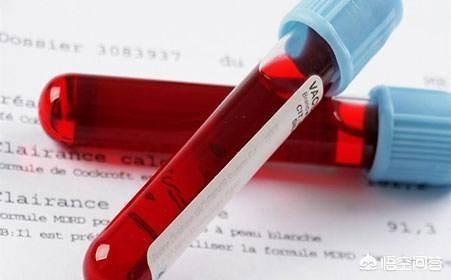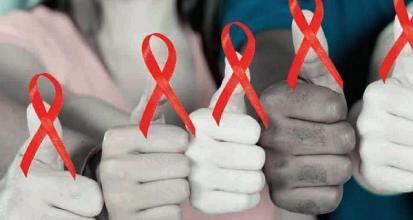Can a person with HIV have a healthy child?
AIDS is a terrible disease. Human beings have been fighting AIDS for 30 years, and although they have not yet been able to completely defeat AIDS, the virus has become weaker and human beings can live in good health for a long time with HIV.

Surviving with HIV, and surviving comes with survival needs like falling in love, getting married and having children.
It is now possible for HIV carriers to have healthy children. But
Love, it takes courage and it takes measures.
One, condoms ensure that the loved one is not infected.
It is common knowledge that condoms can prevent HIV infection if they are used correctly throughout the entire process, as well as in other marginal sexual activities such as oral and anal sex. When a condom breaks and semen is leaked, timely blocking treatment is carried out. It will also minimize the chance of HIV infection.
Second, assisted reproduction helps HIV carriers to have children.
Condoms prevent HIV infection while blocking the sperm from meeting the egg, so how do you get pregnant? Can't you get pregnant? Can!
If the man is healthy and the woman is an HIV carrier, then artificial insemination is possible. In the simplest case, a successful pregnancy may be achieved by injecting semen into the vagina with a syringe, or of course, to increase the probability of pregnancy, semen may be washed and injected into the uterine cavity.
When a woman's viral load is lowered by antiviral treatment and she becomes pregnant by normal intercourse, the probability of a man being infected is also substantially reduced (originally, female-to-male transmission was less likely than male-to-female transmission).
If the woman is healthy and the man is an HIV carrier, then such artificial insemination is as unsafe as natural insemination, so what can be done? IVF can be done, where semen is washed, single sperm injection, and in vitro fertilization-embryo transfer. This minimizes the chances of the woman being infected.
Also if the viral load is lowered after antiviral treatment in men, the probability of infection in women is lowered with normal sexual pregnancy.
III. Preventing fetal infection by blocking treatment during pregnancy
These methods above are to prevent couples from infecting each other. There is also the issue of protecting the fetus if once a woman with HIV becomes pregnant. How to prevent the birth of a congenital HIV carrier? Every HIV carrier wants their child to be free from the disease.
Both men and women prepare for the conception of offspring by starting with a situation in which they are in relatively good physical condition.HIV infection is not curable, but it can be controlled. This means that the virus is carried, but one's immunity is maintained, so that there are no tuberculosis infections, serious fungal infections and no Kaposi's sarcoma. This is a prerequisite for fertility. Especially a prerequisite for women's fertility. Also women get pregnant when they have antiviral treatment before pregnancy to keep their viral load low. Antiviral treatment is also given during pregnancy, which is called mother-to-child blockade therapy. It is entirely possible to deliver a healthy baby with better management before and during pregnancy.
IV. Choosing appropriate non-delivery methods, feeding methods and care measures to prevent neonatal infections
Women with HIV do not necessarily have to have a cesarean section, but cesarean sections are still predominant at present. Perineal circumcision, forceps, and emergency C-sections for difficult vaginal deliveries increase the risk of infection in newborns. Mothers who are HIV carriers are artificially fed. Newborns should have regular checkups after birth, as well as prophylactic antiretroviral therapy. HIV-carrying fathers and mothers should avoid scratches when caring for their newborns and avoid exposing their newborns to blood.
Although AIDS is not yet curable, it is not very scary at the moment. When we know how to prevent AIDS, and how to be safe and intimate with HIV carriers without jeopardizing ourselves, then we can truly not discriminate against HIV carriers. Only when we know how to prevent AIDS and how to be safe and intimate with HIV carriers without jeopardizing ourselves can we truly not discriminate against HIV carriers.
Advances in science and technology have bridged the gap between HIV carriers and non-carriers, shortening the distance between carriers and non-carriers. It is more likely to unburden carriers.
World AIDS Day is celebrated on December 1 every year, and the theme of this year's campaign in China is "Take the initiative to test, know and prevent AIDS, and share health". AIDS is an incurable disease, once infected, there is no cure, and it is important to know that AIDS mainly destroys the body's immune system, so AIDS people mainly die of complications, not AIDS itself.
There are three main channels for the spread of AIDS: sexual transmission, blood transmission and mother-to-child transmission. And mother-to-child transmission is the most cruel, which is tantamount to depriving women of their right to be mothers. So, is there any way for AIDS patients to have healthy babies? As a matter of fact, there is such a possibility. That is to say, HIV-positive mothers are just as capable of giving birth to normal and healthy babies, but with standardized treatment and mother-to-child intervention.
(i) Behavioral interventions to avoid or reduce unprotected sex and multi-partner sex during pregnancy to reduce the possibility of genital infections and contracting sexually transmitted diseases.
Second, pharmacological intervention, taking antiviral drugs under the supervision of a doctor.
Third, feeding methods, avoid breastfeeding and use artificial feeding, special attention is never mixed feeding.
Fourthly, it is best for the mother to choose Caesarean section and the baby, after birth, needs to take antiretroviral drugs for four to six weeks, through which the success rate of blocking HIV from mother to child is still relatively high.
(e) When HIV-infected persons give birth, avoid, as far as possible, such injurious operations as perineal circumcision or artificial rupture of membranes, or else the chances of HIV transmission may be increased.
Sixth, if the HIV carrier is a male, the operation of IVF needs to use the sperm washing technique. This method removes problematic sperm and extracts healthy sperm, using the healthy sperm to combine with the egg to form a fertilized egg, and then using PGDPGS screening technology to test the blastocysts grown from the fertilized egg, under double screening, to ensure that the embryo transferred into the uterus is a healthy embryo.
VII. If the HIV carrier is a woman, there will be an additional step of third-party implantation compared to the operation for men. In order to safely obtain a healthy baby that is not infected with HIV, not only do you need to take the latest IVF methods, but you also need to add a third-party surrogacy procedure.
If all of these things can be done, it is possible for a person with AIDS to have a healthy child.

Click on the bottom of the page [Learn More] to see more answers or ask the doctor a question for free!
Follow "Family Doctor Online" headline, more health Q&A easy to see~~~~

December 1 is the annual "World AIDS Day", it is reasonable to say that there are not many commemorative days named after a separate disease, that is because AIDS is not only a medical problem, but also a social problem.
As a disease, AIDS is kind of unique, not because it is an incurable disease for the time being, but because it creates a challenge to the moral values of human society. Wanting to be a mom or a dad and feel the joy of family is the aspiration of many infected people, but is it possible to overcome the hurdles of sexual transmission, mother-to-child transmission, etc., and get what you want? The answer is: yes!
Sun Xiaoxu, director of the Fushun Women's and Children's Primary Guidance Department, recounted a real-life example of her experience (based on her own account):
I have a picture of a little girl on my cell phone, three years old this year, very pretty like all little girls, smart, happy and generous, every time she sees me she cries out, "Doctor mom wants me to hold. "
Her mom and dad love her so much that they have just chosen a kindergarten for her, and soon the little one will start a whole new journey in her life.
And unlike other children, she was born to a couple of HIV-infected parents.

I met this little girl's mom on a busy morning that was no different than usual, as she and her lover stood in the doorway of my office, looking like they wanted to talk.
Professional sensitivity tells me that they must have something they don't want others to know but have to say. I dismissed my colleagues in the office, I called them to sit down, the girl asked timidly:
Director Sun, I am HIV infected and now pregnant. Director Zou of the Infectious Diseases Hospital asked us to come to you, can you help us?
......
Don't worry, I'm sure I can help you. Let me understand your situation first, okay.

Perhaps it was the certainty in my tone that inspired her confidence, after which I heard the story of a couple of HIV-infected people who fell in love and bonded, and who now want to have a healthy child and want to be mom and dad.
I know how much courage it takes to make such a decision as a couple living with HIV, and how could I not do my best as a healer.
As an HIV-infected person for many years, she was very different from other AIDS mothers who learned of their illnesses only through testing during pregnancy. She was less panicky and more calm, had good compliance, took her medication and follow-up appointments strictly as instructed, and would happily say she wanted to treat me to a big meal when she looked at her increasingly high CD4 and almost zero viral load.
It was also because she was an old patient she was also unusually sensitive, and would cry because of the small gesture of the dispensing nurse throwing the pill box when picking up the medication, mistaking it for discrimination.
Later she used to say, "It was the children that got me through."
To avoid infection, I advised her to have a cesarean section. The first cry of the little one melted the gloom that had piled up in her heart. She saw her baby kicking and crying desperately, and her joy was stronger than ever.

The birth of a new life is full of joy, and although the likelihood of a child being infected is extremely low, no one can be sure that they will not encounter that one percent.
I still remember the anxiety of her parents when their child had her first HIV test after she was born, and they seemed extraordinarily agitated when the results didn't come back. Even though I said it was safe, they were always worried and especially wanted to know the results, and would call me at any time to ask if the results were in.
The two nucleic acid tests at birth and at three months were negative, and my heart dropped by half. It was New Year's Day, and they came to see me, bringing me delicious food, excitedly telling me about the baby's growth, the little conflicts between my mother-in-law and daughter-in-law, and so on and so forth.
And antibody testing at one year of agemasculine, again, sinking each of our hearts into the ice!
I have reviewed the past medical records and looked up the literature, and I am almost certain that this test should be a false positive, and that the antibody will turn negative by the age of one and a half years, and all that is needed then is to wait. During this six-month waiting period, no matter early in the morning or late at night, they would always tweet and call to make all kinds of assumptions, suspecting all kinds of possibilities, and all I could do was to keep reassuring and encouraging them.
Having practiced medicine for many years, it was then that I understood the true meaning of the phrase "sometimes healing, often helping, always comforting".
Six months seemed like a century, the baby was finally confirmed HIV-negative, and our hanging hearts finally fell to the ground. This was the end of my work. During these two years of companionship, my relationship with them and the baby was no longer like doctor and patient, but more like family. They would bring the baby back to visit me when they had time, and often sent me photos and videos to share with me the milestones that the baby had reached in his development.
Speaker: Sun Xiaoxu, Director of the Primary Guidance Department of Fushun Maternal and Child Health (Chief Physician of the Department of Women's Health, Member of the Youth Committee of the Liaoning Provincial Society of Perinatal Medicine, Member of the Women's Health Branch of the Liaoning Provincial Society of Preventive Medicine)

Nowadays, medical science and technology are very advanced, and it is still possible for parents with AIDS to give birth to healthy babies. You should consult a doctor before pregnancy and follow the doctor's advice to prepare for pregnancy; you should go for regular checkups when you are pregnant and take medication to control the viral load; and you should not breastfeed after delivery because the virus can be transmitted through breastmilk, so in order to stop the transmission of the virus, breastfeeding is prohibited.
If you trust your doctor and follow his or her instructions, you will have a better chance of having a healthy baby.
谢邀.
Answer:You can have a healthy little baby, but there are chances of failure.
1. HIV-positive mothers can still have healthy babies.
2. AIDS has three routes of transmission, blood, sex and mother-to-child.
3. A few years ago, it was true that if the mother was positive, termination of pregnancy was the first thing recommended in order to avoid the child being born infected with AIDS. But now, responsibly, fertility is no longer a problem technically, but rather a more prominent issue in medical ethics and morality. When your spouse gives informed consent and is willing to give birth to a child for you, you are perfectly capable of having your own healthy baby under the guidance of an expert.
4. If a mother with HIV does not take any measures, the chance of natural transmission to her child is between 30% and 50%. However, if a comprehensive interruption method is implemented, the chances of a baby born to an HIV-positive mother being infected with HIV can be reduced to about 2-3%, or even less than 1%.
5. The standard treatment and medication program of mother-to-child interruption in our country is the same as that of European and American countries, and it is free of charge. The mother-to-child interruption technology in our country has reached the international advanced level, and as long as the infected people are actively treated, followed up on time, and do a good job in obstetrics as well as in children's health care, the rate of interruption can reach more than 98%, which is higher than that of Hepatitis B and Hepatitis C. Mothers can control the viral level in their bodies through antiviral drugs, improve the immunity level, especially reduce the viral load in their bodies.
6. The prerequisite for HIV-positive mothers to have healthy babies: taking medication on time and keeping the disease load below the detection line.
7. If HIV infection is detected before pregnancy, it is recommended that antiretroviral treatment be given first, and pregnancy should be considered after the disease load is undetectable.
8. If HIV infection is detected during pregnancy, prompt antiretroviral treatment is recommended.
9. In the absence of specific contraindications, the optimal treatment regimen for interrupting mother-to-child transmission of HIV is chidoramix.
10. A viral load test is performed in late pregnancy, and if the disease load is reduced to undetectable levels and the indications for normal delivery are met, normal delivery is preferred.
11. Promote artificial feeding, avoid breastfeeding and eliminate mixed feeding.
12. Start blocking medication as soon as possible after birth (within 6 to 12 hours).
Above, please.
Is it possible to have a healthy baby with HIV?
Sure!
302 Love Without Borders Heartwarming Tips:
At present, it is medically possible for HIV-infected people to have normal children. The basis for having a healthy baby is to take your medication every day, successfully suppress the virus, and then conceive under the guidance of a medical professional. It is also important to have an open and honest conversation with your loved one!
The man is infected.
If the man in the family is infected and the woman is non-infected, the problem is simpler. The male can be treated with antiretroviral therapy and will be less infectious once the virus is undetectable, but protection during sex, such as the proper use of condoms, is still needed. It is important to know, however, that studies have found that condoms do not prevent 100 percent of HIV transmission between monogamous partners. Maximum protection can only be achieved if the HIV-negative partner takes antiretroviral medication along with the correct use of condoms.
If you want to have a child, you should fully understand the precautions before and after HIV exposure and other related knowledge, avoid HIV transmission by taking blocking medication, have intercourse during ovulation and get pregnant as soon as possible. A large number of actual cases have proved that this is safe and reliable.
But how to treat it?
For male patients, sperm cells are free of HIV.
If the viral load is controlled by medication to a relatively ideal level of less than 50 and the CD4 is greater than 350, the sperm can be separated from the semen using the sperm wash technique, which reduces the probability of contracting HIV. After the sperm washing technique is completed, with the help of third party assisted reproduction, the father-to-be can save a healthy baby.
The principle of the "sperm washing" technique is that semen is injected into the test tube and allowed to mix with the osmotic agent, then the mixture is put into a high-speed centrifuge, and the seminal plasma containing the HIV virus floats to the top, and then a healthy sperm is found through a high-powered microscope to unite with the egg, and then the sperm is nurtured until the fifth day, and the blastocysts formed are subjected to PGS/PGD genetic screening and diagnosis to complete the entire IVF cycle. After the formation of blastocysts, they are diagnosed by PGS/PGD genetic screening and only those blastocysts free from any genetic defects and genetic diseases are transferred into the woman's uterine cavity to complete the entire IVF cycle.
Pregnant women are infected
The transmission of HIV includes mother-to-child transmission. Mother-to-child transmission has three stages: placental infection, infection in the birth canal during delivery, and infection in the breast milk after delivery, and therefore prevention needs to be based on these three aspects as well.
We know that women who are infected are maintained on antiviral therapy for life, and all babies born to them should be given antiviral drugs as early as possible after birth, preferably within six hours of birth, for four to six weeks. If the mother is found to be an infected person only at the time of birth, or if, for any reason, the antiviral medication is taken at the time of delivery for less than four weeks, the newborn baby will need to take the antiviral medication for a longer period of time, from six to twelve weeks.
When a pregnant woman gives birth, health-care workers should try to avoid minimizing physical injury to the woman. Since part of the transmission of HIV is through the birth canal during delivery, health-care workers should take extra care to minimize the use of artificial rupture of membranes, the use of fetal head traps, or forceps to assist delivery.
Pregnant women also try to avoid direct breastfeeding after giving birth because breastfeeding is also one of the transmission routes, as the infected person's breast milk can carry the virus, however, the newborn baby's digestive system is weaker, so it is very likely that the infected person may transmit the virus to the baby through the feeding method, and there may be situations such as nipple breakage, which also increases the baby's risk of being infected with AIDS.
If, for any reason, breastfeeding is an option, then the mother must maintain antiviral treatment throughout the breastfeeding period, preferably for no longer than six months.
Will the medication have an effect on the child
Among the national free antiviral drugs, only efavirenz has a theoretical teratogenic effect on the fetus, so if you want to get pregnant, in the absence of antiviral treatment, it is recommended that women infected with the disease do not need to use efavirenz, but preferred to kleenex, and the use of nevirapine can be considered in the case of a CD4 of 250 or less. The other antiviral drugs basically have no effect on the fetus. As for female infected patients who have been steadily taking antiviral drugs for some time, it is now recommended that even if a combination of drugs with efavirenz is used, it should not be changed easily, because the risk of resistance due to changing back and forth is much greater than the probability of possible fetal malformations.
Has the baby been infected with AIDS?
It can take up to eighteen months to determine if the baby is infected. The most common method used is to test the baby for HIV antibodies.
If the baby is HIV-positive within 18 months of birth, there is no need to worry too much at this point; it is possible that the HIV antibodies are coming from the mother's body (it is not certain whether she is infected or not).
HIV infection can be ruled out when the baby turns negative for HIV antibodies after 18 months of life. From there, it is determined that the baby is not infected.
But eighteen months is too long for many infected people. Then, the viral load of the baby's plasma can also be tested to determine whether the baby is infected with HIV.
Through the above, I believe you will have a deep understanding of this issue. HIV infection due to a momentary lapse can easily lead to lifelong regrets, and it is even a heavier blow to the pregnant woman and the baby born in the future. Although we know that nowadays there are scientific methods to prevent the birth of infected babies through mother-to-child blocking, we know that only by being vigilant in general can we be free from worries for life!
Thanks for the invite:

Whether AIDS patients can give birth to healthy children, modern medicine has determined that the transmission of AIDS is mother-to-child transmission, if you want a healthy child, you must go to take the mother-to-child blocking drugs, through the beginning of pregnancy

The blocking technology can give birth to a healthy child, but there is still a 1% chance that the child may be infected with HIV, so we cannot guarantee that you will have a healthy child 100% of the time!

If you've done your homework on all the aspects of having a baby, then we wish you a healthy baby!
Thanks for the invite!
In the case of a pregnant person with HIV, a "mother-to-child blockade" can be used to effectively prevent the transmission of HIV to the baby.
As we all know, AIDS is also transmitted from mother to child, which means that the mother can transmit the virus to the fetus in her womb, posing a certain health risk to the fetus. During pregnancy, delivery or breastfeeding, HIV-infected mothers can transmit the virus to their fetuses or babies, causing them to become infected. This means that during pregnancy, the mother-to-be can transmit HIV to the fetus through the placenta. Newborns can also get AIDS when they pass through the mother's birth canal during labor and are exposed to blood or secretions. Or if the child is born, if he or she eats the mother's milk, the mother's milk may contain the AIDS virus, and the child may be infected at that stage as well. Studies have shown that the incidence of mother-to-child transmission of HIV is as high as 50 to 60 percent without intervention, while effective mother-to-child interruption of HIV usually reduces the rate of vertical transmission from mother to child to 2 to 5 percent.
For a woman with AIDS, it may be a bit difficult to have a healthy child, but with the continuous improvement of medical technology, there is a kind of "mother-to-child blocking" method that will allow these women to realize the dream of having a healthy baby.
The so-called "mother-to-child blockade" refers to the interruption of HIV transmission from mother to child through the use of medication for pregnant women, the use of medication for babies at birth, and artificial feeding after an HIV-infected woman has become pregnant. Mothers-to-be are required to start taking anti-HIV medication within 28 weeks of pregnancy to minimize the transmission of the virus to their unborn babies. If possible, the mother should have a cesarean section to prevent the fetus from coming into contact with the mother's secretions or blood during delivery. The mother should also try not to let her child breastfeed after delivery, and if it is unavoidable, she should express and reheat the milk to minimize the chance of HIV transmission to her child through breast milk. However, it is still necessary to choose good quality and safe breastmilk substitutes and use artificial feeding methods to minimize the chance of the child being infected.
In addition, during pregnancy, mothers-to-be need to face reality correctly, maintain a calm mood during pregnancy, reduce the chances of mother-to-child transmission through a positive attitude, and protect the health of the child's whole life with all the efforts they can do!
AIDS patients can give birth to healthy babies, single-positive or double-positive can give birth to healthy babies, but there are prerequisites, single-positive families through antiretroviral treatment to control the disease load at undetectable levels, and under the guidance of the doctor for conception, the current level of medical technology through artificial insemination. After the semen is washed, a healthy baby can be born.
This question and answer are from the site users, does not represent the position of the site, such as infringement, please contact the administrator to delete.